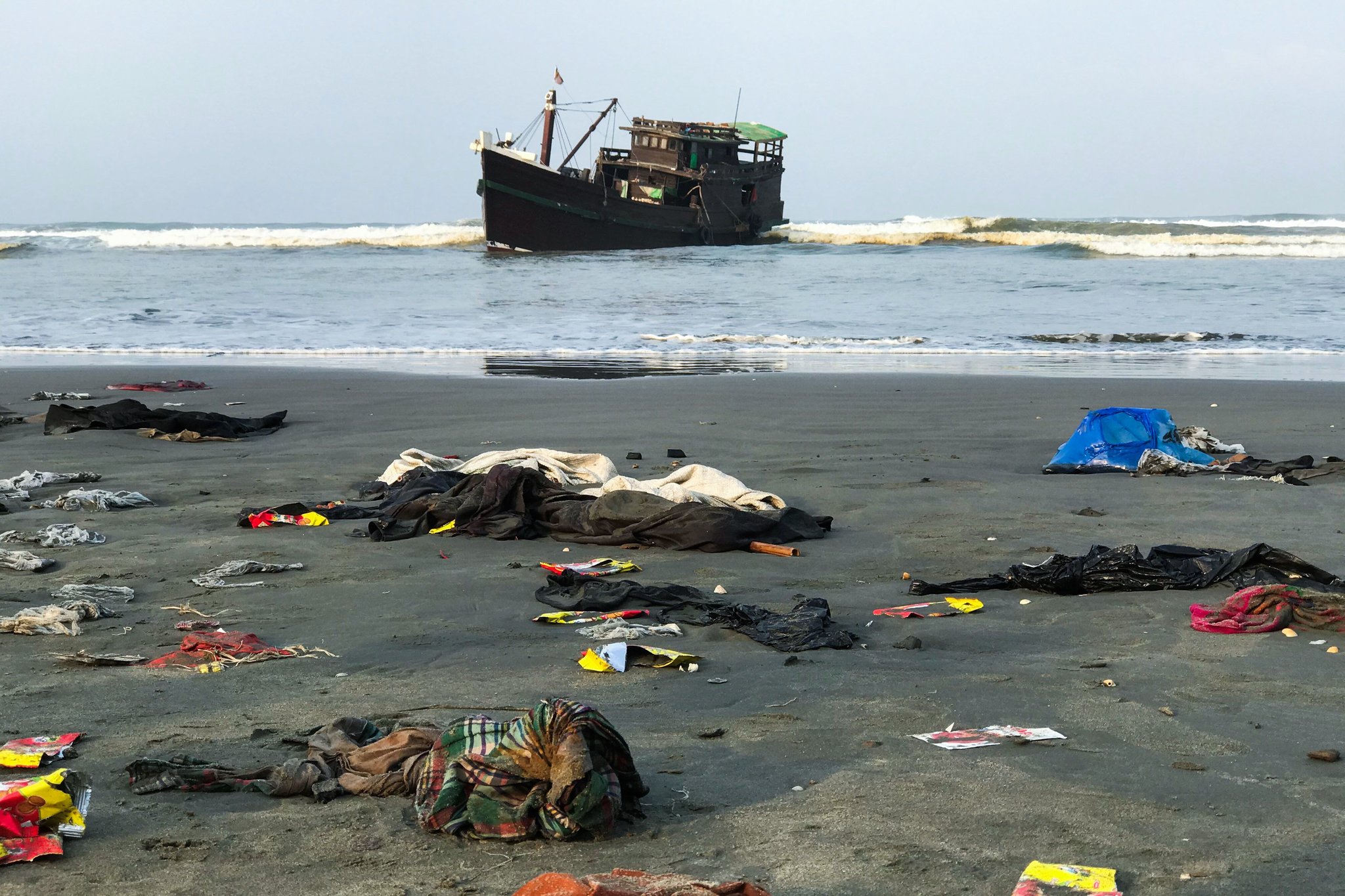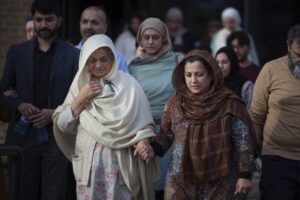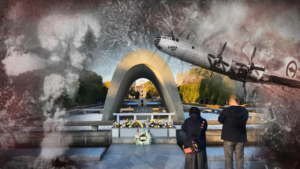At least three boats carrying Rohingya refugees have been adrift for more than two months. As of this week, rights groups that had been tracking the boats lost sight of them.
BANGKOK — Somewhere in turquoise waters, perhaps where the Bay of Bengal meets the Andaman Sea, wooden boats filled with Rohingya refugees are listing, adrift now for more than 10 weeks.
They were prevented from docking in Malaysia, their preferred destination, and Bangladesh, their port of origin. As of this week, rights groups that had been trying to track the boats by satellite lost sight of them. Each boat — there were at least three — carried hundreds of Rohingya Muslims desperate for sanctuary and at the mercy of human traffickers.
“I feel like crying, realizing the situation of my brothers and sisters who are still floating in the deep sea,” said Mohammad Yusuf, a chief imam in one of the refugee camps in Bangladesh, where about one million Rohingya have taken refuge after fleeing waves of persecution and violence in neighboring Myanmar.
The boats had been caught in what the United Nations has called a dangerous “game of human Ping-Pong.” The Bangladeshi government balked at accepting them, arguing that it has already taken in many Rohingya and borne a far greater share of the burden in the refugee crisis than any other nation.
But with Malaysia refusing to allow the boats to dock amid a national coronavirus lockdown, and a xenophobic mood sweeping the region, the boats had nowhere else to go.
“Bangladesh has shouldered very heavy responsibilities for the Rohingya refugees and must not be left alone to deal with these challenges,” said Steven Corliss, the United Nations refugee agency’s representative in Bangladesh. “But turning desperate people away cannot be the answer.”
The deadly results of such a rejection became clear on April 15 when another Rohingya boat that had been prevented from docking in Malaysia was rescued by the Bangladeshi Coast Guard. Nearly 400 malnourished and dehydrated figures, many of them children, emerged from the hold, where they had been kept by human traffickers.
The United Nations refugee agency, which assessed the refugees’ condition, did not quantify how many Rohingya perished on the journey, saying simply that “many died and were tossed overboard.” A significant number had suffered physical abuse at the hands of the traffickers, the agency said.

The Rohingya who survived that journey are now in quarantine for the coronavirus at a temporary camp in Bangladesh.
The human traffickers who smuggle the Rohingya from internment camps in Myanmar, or refugee camps in Bangladesh, prey on some of the most vulnerable people on earth. Mostly stateless and traumatized by decades of persecution by the Myanmar military, many Rohingya are desperate to get to Malaysia, where they can find work as undocumented laborers. About 100,000 are registered with the United Nations refugee agency, and many more live in the margins of society with no paperwork at all.
A trade in Rohingya women and girls supplies wives to the Rohingya men, ensuring that an already disenfranchised community continues to suffer in another country.
Hundreds of Rohingya have died trying to get to Malaysia. Some were thrown overboard from overloaded boats when the journeys lengthened because countries refused them safe harbor. Others were buried in mass graves in the jungle when their families could not afford trafficking fees that suddenly increased during the trip, a common tactic by human smugglers to squeeze more money out of the trade.Sign up to receive an email when we publish a new story about thecoronavirus outbreak.Sign Up
Mr. Yusuf, the imam in the Bangladeshi refugee camp, said that he and other clerics have advised families against the perilous sea expeditions.
But the sense of hopelessness in the camps, where hundreds of thousands of people are chronically underemployed, has propelled the Rohingya to put their lives in the hands of smugglers.
“Punishment should be given to human traffickers, not these innocent Rohingya,” Mr. Yusuf said.
Conditions on the boats have been likened to those of modern day slave ships, with Rohingya women and children packed together so tightly in the darkened hold that they can barely stretch out.
When coast guards and navies in Thailand and Malaysia have intercepted the boats, they have sometimes thrown packets of instant noodles and cases of drinking water aboard the vessels. But in refusing to give them shelter, the Southeast Asian authorities condemn many Rohingya to death, rights groups say.

In interviews, survivors said they got used to the daily rhythm of bodies being tossed overboard.
In 2015, the police in Malaysia uncovered nearly 140 graves and cages made of branches at jungle camps for trafficked Rohingya and Bangladeshis who were trying to make their way from Thailand to Malaysia.
Authorities in both countries have been accused of complicity in the trade and of impeding efforts to eradicate it. While Thailand eventually convicted nine officials of participating in human trafficking schemes, no Malaysians have been held accountable.
The persecution of the Rohingya intensified in 2017 when the Buddhist-majority military in Myanmar unleashed what United Nations officials have described as a campaign with genocidal intent. Hundreds of thousands of Rohingya poured across Myanmar’s border with Bangladesh, bringing with them stories of executions and mass rape.
Many Rohingya now live in refugee camps spread across denuded hills once thick with bamboo and fruit orchards in eastern Bangladesh. Conditions that were crowded and hot even before the coronavirus epidemic are now even more dire, according to humanitarian organizations.
No Rohingya have been confirmed to have contracted the virus in the camps, although testing is limited. Worried about the spread of the virus among the refugees, the Bangladeshi government has banned most aid workers. With certain social distancing rules in effect, some Rohingya have lost the few low-paying jobs they had.
Now that roughly 80 percent of aid workers have been barred from the camps, important medical campaigns, like measles vaccines, have been halted. Latrines are flooding while there is not enough water for showers, residents said. A mobile internet ban instituted by the Bangladeshi government has made conditions worse.
Despite the dangers of the journey, some camp residents said, the perilous passage to Southeast Asia might still be worth it.
One refugee who fled to Bangladesh in 2017 said if he could afford it, he would send his sons to Malaysia. Another cursed the money he had lost from a failed trip in an earlier sailing season.
“People are always looking for a safe and better life,” said Sirajul Mustafa, who lives in the Kutupalong camp, the world’s single largest refugee settlement. “Brokers keep luring them. They are taking risks without knowing the consequences.”
From his bamboo shack in Kutupalong, Mohammed Noor summed up the Rohingya condition.
“No big hope before,” he said, “but now zero hope.”




